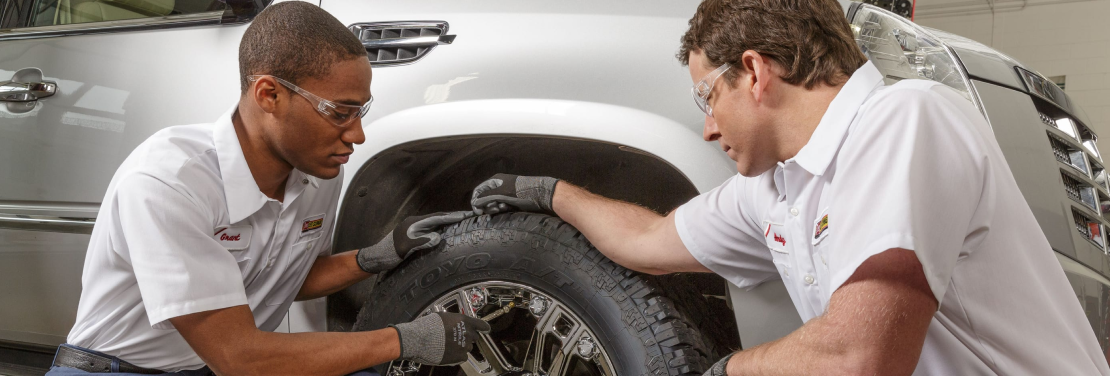Tire Service: Understanding Tire Stress Tracking Systems
Recognizing Tire Pressure Tracking Systems (TPMS) is a critical element of preserving optimum vehicle performance and security on the roadway. With developments in auto technology, TPMS has actually come to be a typical feature in contemporary cars, giving real-time information on tire pressure levels.

Significance of TPMS
The value of Tire Pressure Surveillance Systems (TPMS) exists in their capacity to improve car safety and security and performance with real-time surveillance of tire stress degrees. Maintaining the proper tire pressure is important for ensuring ideal handling, stopping, and general safety of a lorry. TPMS gives drivers with prompt responses on any type of overinflated or underinflated tires, permitting timely changes to be made.
Elements of TPMS
Making up numerous important aspects, a Tire Stress Surveillance System (TPMS) operates as a sophisticated safety and security feature in contemporary lorries. The primary parts of a TPMS consist of sensing units, a control module, and a warning indicator. Sensors are normally situated in the tire shutoff stem or connected to the wheel assembly, where they gauge tire stress and send data to the control component. If it detects considerably reduced stress in any of the tires, the control module procedures this information and causes a warning. The caution indicator, usually a symbol on the dashboard, notifies the chauffeur to inspect the damaged tire or tires. Some advanced TPMS versions likewise present the actual tire pressure analyses for each and every tire, supplying motorists with real-time info to ensure optimum tire efficiency and safety and security. By keeping an eye on tire pressure continually, TPMS aids avoid accidents, lowers tire wear, and boosts gas effectiveness, making it a critical element for lorry security and performance.
Kinds of TPMS

On the other hand, indirect TPMS relies upon the lorry's wheel rate sensing units to monitor tire pressure. This system identifies underinflation by comparing the rotational speeds of the wheels. Indirect TPMS is much less costly than direct TPMS, as it utilizes existing sensing units within the lorry.
While direct TPMS uses extra accurate readings, indirect TPMS is less complex in layout and commonly calls for less upkeep. Both systems have their benefits and constraints, and the option in between them commonly depends on factors such as expense, lorry make, and individual preference. Comprehending the distinctions in between these 2 types of TPMS can help vehicle proprietors make informed choices relating to tire upkeep and security.
TPMS Upkeep Tips
Conduct regular checks on the tire pressure degrees and compare them with the TPMS analyses to ensure they are regular. During tire turning or substitute, make sure that the TPMS parts are taken care of meticulously to protect against any type of prospective damage. If the TPMS cautioning light illuminates on the dashboard, address the concern immediately by examining the tire stress and the total system for any kind of mistakes.
Benefits of Proper Tire Stress
Keeping correct tire pressure, as highlighted in TPMS Maintenance Tips, is important for enjoying the countless benefits linked with ideal tire stress degrees. Furthermore, proper tire stress ensures also tire wear, extending the life-span of the tires and advertising more secure driving conditions. In final thought, the benefits of morris tire and alignment proper tire stress go past just tire longevity; they encompass enhanced fuel performance, enhanced safety, far better automobile efficiency, and total driving comfort.
Verdict
To conclude, recognizing tire pressure surveillance systems (TPMS) is critical for keeping optimal tire stress and making certain lorry safety and security. By recognizing the importance of TPMS, knowing with its elements, recognizing the different kinds readily available, adhering to correct upkeep ideas, and realizing the advantages of keeping proper tire pressure, vehicle drivers can boost their driving experience and prolong the life expectancy of their tires. Proper tire stress is essential to efficient and risk-free vehicle procedure.

 Andrea Barber Then & Now!
Andrea Barber Then & Now! Charlie Korsmo Then & Now!
Charlie Korsmo Then & Now! Joshua Jackson Then & Now!
Joshua Jackson Then & Now! Michelle Trachtenberg Then & Now!
Michelle Trachtenberg Then & Now! Nicholle Tom Then & Now!
Nicholle Tom Then & Now!